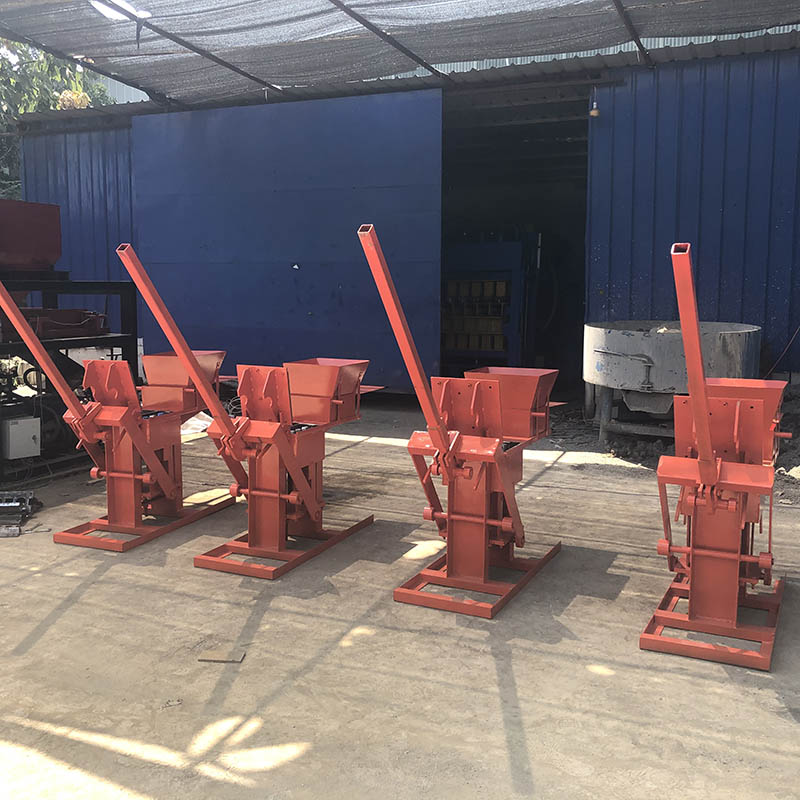
Image source :Aiweiblockmachine
Introduction:
Brick making has a rich history that dates back thousands of years. From the traditional manual brick-making methods to modern automated processes, the industry has witnessed remarkable advancements. In this article, we delve into the evolution of brick making machines and their impact on the construction sector.
- Early Brick-Making Techniques: In ancient civilizations, such as Mesopotamia and Egypt, bricks were molded by hand using clay and then dried in the sun. The process was labor-intensive, limiting the scale of construction projects. The introduction of brick kilns improved the quality of bricks but did not significantly reduce the manual labor involved.
As human civilizations progressed, the need for more efficient construction techniques became evident. The first step towards mechanization in brick making came during the Industrial Revolution in the 18th century. The manual brick press was one of the earliest machines to revolutionize the process. This device used mechanical force to compact clay into consistent shapes, speeding up production and ensuring uniformity.
- The Industrial Revolution and Brick Press: The Industrial Revolution in the 18th and 19th centuries brought mechanization to many industries, including brick making. The brick press was one of the first machines to revolutionize the process. This device used mechanical force to compact clay into consistent shapes, speeding up production and ensuring uniformity.
The brick press played a significant role in transforming the brick-making industry. The mechanical force applied by the press allowed for the production of bricks with consistent dimensions, which greatly simplified the construction process. The traditional method of hand-molding bricks led to variations in size and shape, making construction more challenging and time-consuming. The introduction of the brick press increased efficiency and improved the quality of bricks, leading to increased demand for bricks in construction projects.
- Introduction of Steam-Powered Machines: In the 19th century, steam-powered machines emerged, further transforming the brick-making industry. These machines allowed for increased output and improved brick quality. The adoption of steam-powered technology led to a surge in construction projects during the Victorian era.
The introduction of steam-powered brick-making machines marked a significant milestone in the industry. These machines automated the brick production process to a large extent, reducing the physical labor required and increasing the rate of production. Steam-powered brick machines could mold larger quantities of bricks in a shorter period, revolutionizing the construction industry.
- Electric Brick Making Machines: The early 20th century witnessed the transition from steam-powered to electric brick-making machines. Electrically operated machines offered greater efficiency, reduced maintenance requirements, and improved safety. As a result, the brick industry experienced substantial growth.
Electric brick-making machines proved to be a game-changer for the construction industry. The electrically powered machines were more reliable and required less manual labor compared to their steam-powered predecessors. This led to increased productivity and a significant reduction in production costs, making bricks more affordable and accessible for various construction projects.
- Automated Brick Making Machines: With the advent of computerized technology, brick-making machines became fully automated. These machines integrated computer control systems that optimized the brick production process, from raw material mixing to molding and firing. The automation significantly increased production rates while maintaining consistent brick quality.
The introduction of fully automated brick-making machines revolutionized the construction industry once again. Computerized controls allowed for precise monitoring and adjustment of various parameters, resulting in bricks with unparalleled uniformity and quality. These machines could produce thousands of bricks per hour with minimal human intervention, making them ideal for large-scale construction projects.
Conclusion:
The evolution of brick making machines has been a fascinating journey, starting from simple manual methods to sophisticated, computer-controlled systems. These machines have played a crucial role in shaping the construction industry, allowing for faster, more efficient, and cost-effective brick production. From the manual brick press of the Industrial Revolution to the fully automated brick-making machines of the modern era, each technological advancement has contributed to the growth and success of the construction sector. As technology continues to progress, we can expect further innovations in brick-making machines, further enhancing the efficiency and sustainability of the construction industry.
